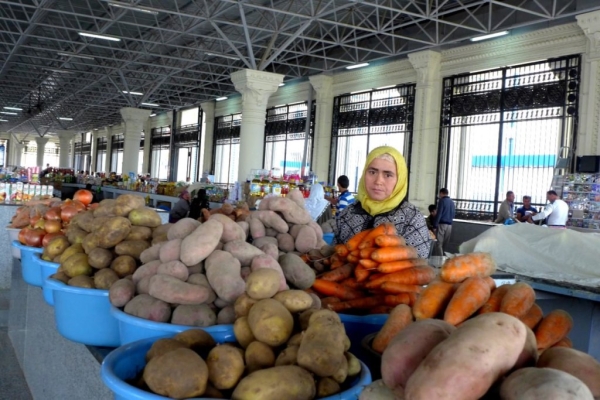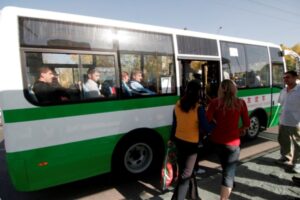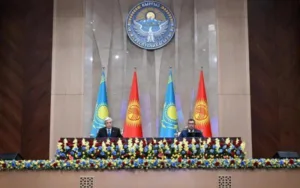
Photo: Asia-Plus
Tajikistan has approved a Food security Program for 2026-2030. It should help the country become more independent in food matters, make food more accessible to people and strengthen agriculture in the face of climatic and economic difficulties. 378.2 million somoni have been allocated for the program, of which the main part will be financed by international donors.
80% of the products are our own, but we depend on imports
As noted in the section "Situation analysis and main problems", Tajikistan has made progress in previous years: if at the beginning of the decade the country provided about 70% of the population's basic food needs, by 2024 this figure has increased to 80%.
Agriculture continues to develop – in 2024 alone, the volume of production increased by 10%. The production of cereals, vegetables, melons and fruits has increased significantly.
However, serious challenges remain. The country is heavily dependent on imports of wheat, sugar, butter and other products. Animal husbandry does not cover the needs yet: only half of meat consumption is provided on its own. Irrigated land is being used inefficiently, and the irrigation infrastructure needs to be upgraded. The situation is complicated by climate change: droughts, floods and melting glaciers directly affect agriculture.
Another problem is the high cost of food for the population. On average, more than half of the Tajik household budget is spent on groceries, which indicates the food vulnerability of many households.
Security on the table: what will change for people by 2030
The main goal of the program is to fully ensure food security at the national, regional and family levels. To do this, it is planned to increase production, improve people's access to food, improve its quality and make the supply chain more resilient to crises.
Special attention will be paid to effective water resources management, the introduction of modern agricultural technologies, the adaptation of agriculture to climate change, and the development of processing and logistics infrastructure.
The program also provides for increasing the level of public knowledge about the principles of healthy nutrition and sanitation, and targeted support measures will be developed for vulnerable groups.
By 2028, it is expected that the production of certain types of products will increase by at least 10% and investments will increase by 15% compared to 2025. By 2030, Tajikistan is expected to significantly increase agricultural production through innovation, increase livestock productivity, and reduce food costs.
Vulnerable groups of the population will have better access to food and information about a healthy lifestyle. Food markets will become more resilient, and the state and regions will be better prepared for crises and climate challenges.
How much does food security cost?
378.2 million somoni are allocated for the implementation of the Food Security Program until 2030. Of this amount, 53.3 million will come from the state budget, 25.5 million will be provided by the private sector, and almost 300 million will be provided by international donors and development partners.
The main part of the funds – over 360 million somoni – is directed to practical measures for agriculture and food sustainability. The largest item of expenditure will be land reclamation and restoration: 170 million somoni have been allocated for these purposes.
Almost 55 million will be spent on the purchase and implementation of modern agricultural machinery and equipment, and another 50 million will be spent on the development of food and logistics infrastructure, including warehouses, refrigerators, processing and transport.
Significant amounts are provided for other areas as well. Thus, 22.5 million somoni will be allocated for the development of organic plant protection products, about 20 million for projects to support sustainable farming methods and adaptation to climate change.
10.6 million somoni were allocated for the development of animal husbandry and increasing productivity, and 7 million somoni were allocated for the breeding of new varieties and the development of seed production. Separate funds are provided for the digitalization of agriculture (3.7 million somoni) and for programs to improve nutrition and public awareness (about 5 million).
The financial model of the program shows that the main burden falls on international partners: they will provide about 79% of all investments. The government accounts for only 14%, while the private sector will cover about 7% of the costs.
The main risks are climate and geopolitics
Natural disasters, water shortages, outdated irrigation systems and poor implementation of new technologies are among the risks that may slow down the implementation of the program. External factors also play an important role, such as instability in world markets and the geopolitical situation that can disrupt supplies.
To reduce these threats, it is planned to create a monitoring and early warning system, as well as mechanisms for rapid response to crises.
The Ministry of Agriculture, together with local authorities, is responsible for the implementation of the program. Monitoring will be conducted according to approved government regulations to ensure transparency and effectiveness of all measures.




